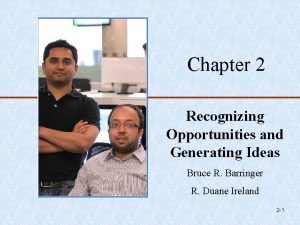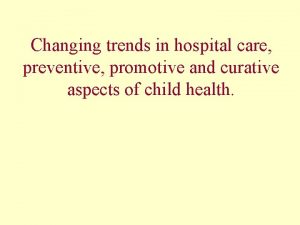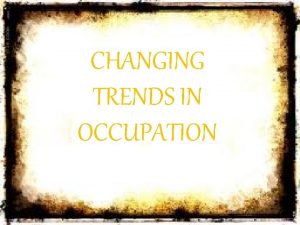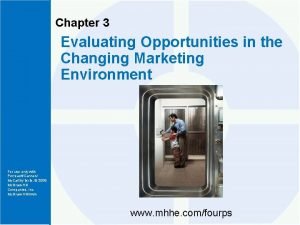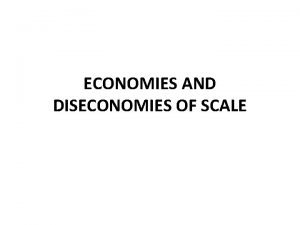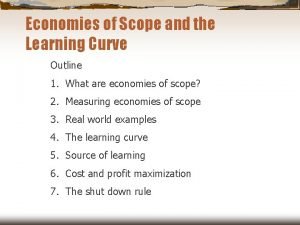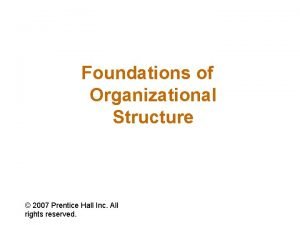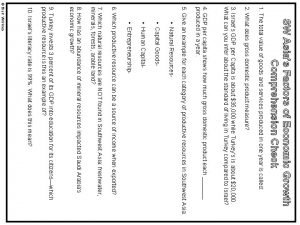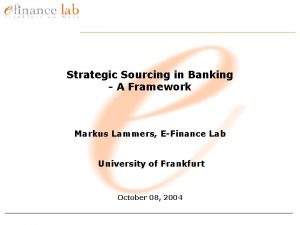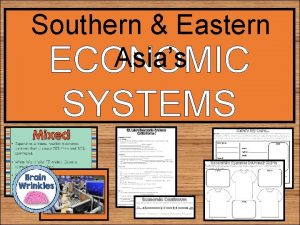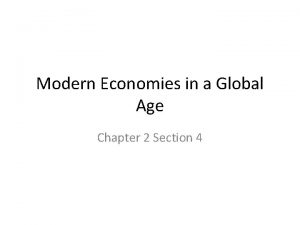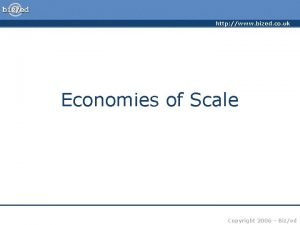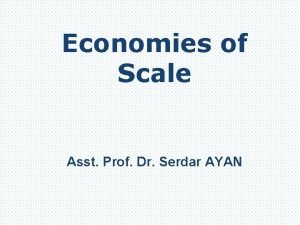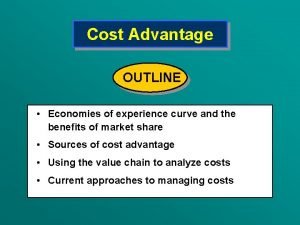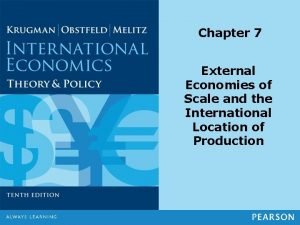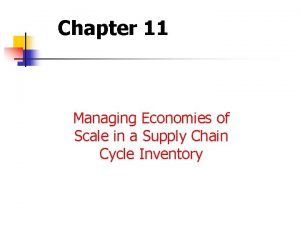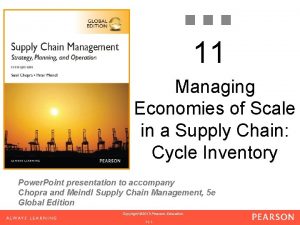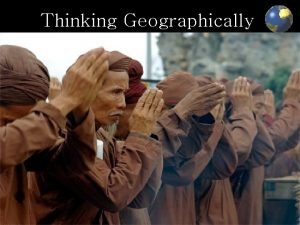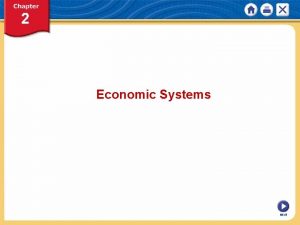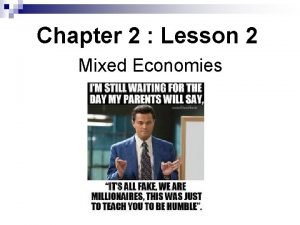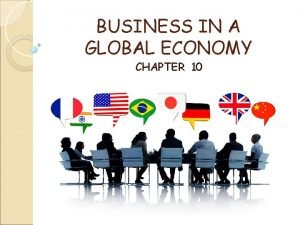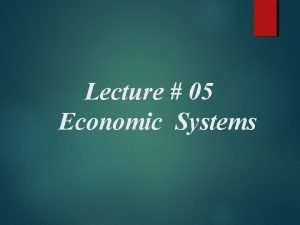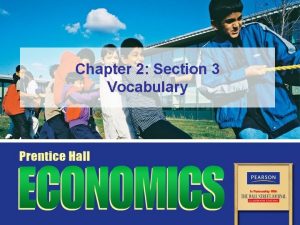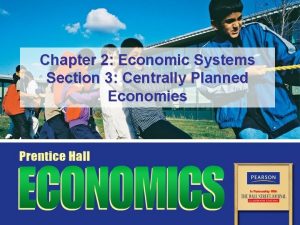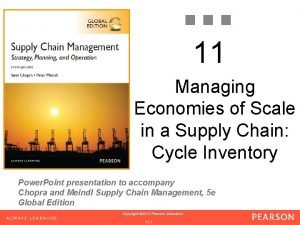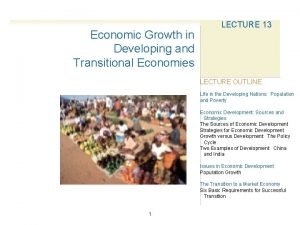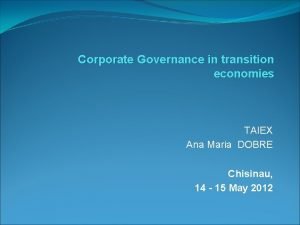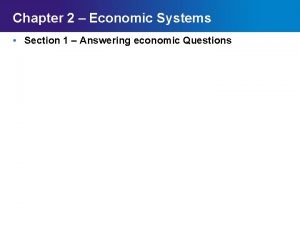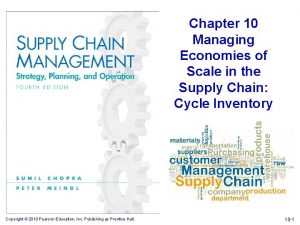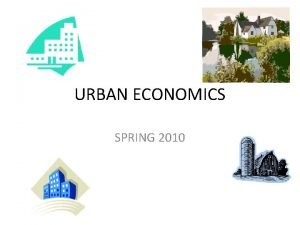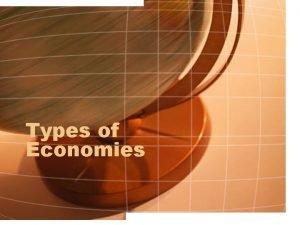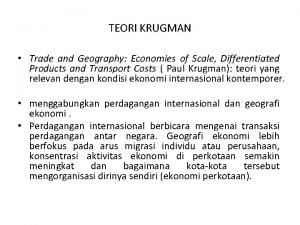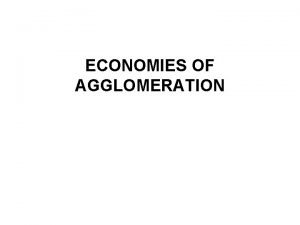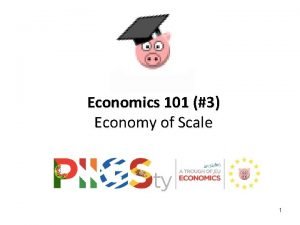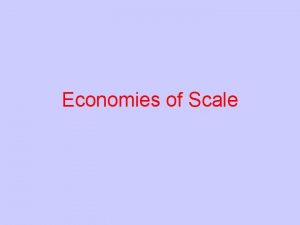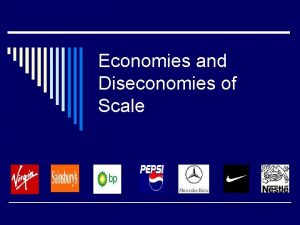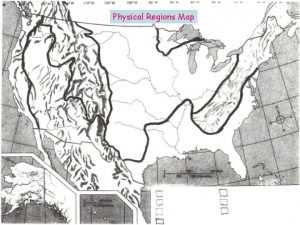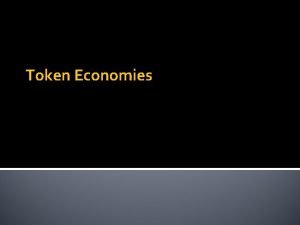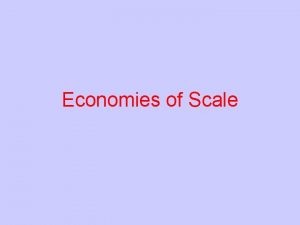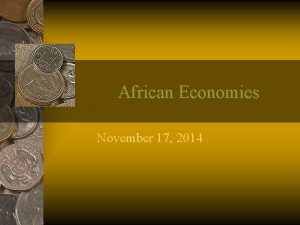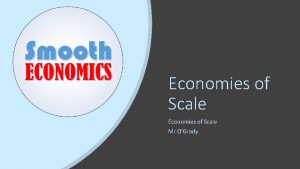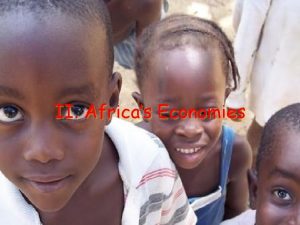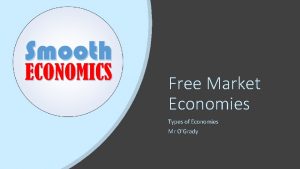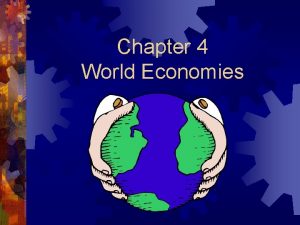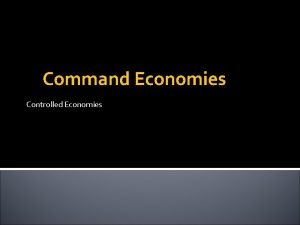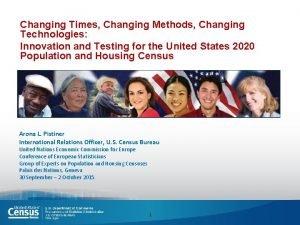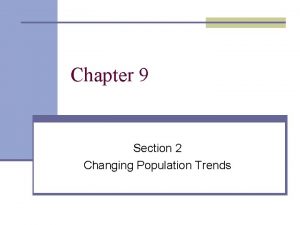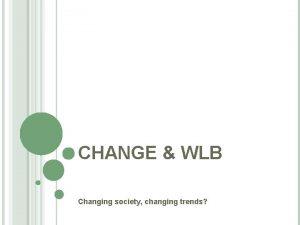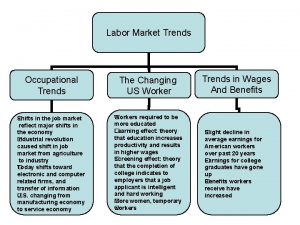REGIONS Trends and Opportunities Regions in Changing Economies








































- Slides: 40

REGIONS Trends and Opportunities Regions in Changing Economies SCRPC/SCATS Annual Dinner Fred Abousleman Executive Director National Association of Regional Councils

Our Premise • Thanks to SCATS/SCRPC • Infrastructure is key • Redefining the region and the regional economy is key

The Current Economic Crisis • Massive infusion of public capital into the economy – close to one trillion dollars • Sweeping commercial and personal default – Add $225, 000 to every foreclosure for true economic effect • Is slowing investment and innovation • The premise that the private sector would assist the public in development and infrastructure is now false for the foreseeable future

State of the Nation • US economic conditions is hitting everything – federal, state and local budgets are under constraints and cuts. • ASCE has given our nation's public infrastructure a D, estimating that it will cost $2. 2 T over the next five years just to repair current infrastructure • More than 72, 000 miles of municipal water and sewer pipe are more than 80 years old, threatening the public health and economies of communities large and small • Japan, China, India, and the EU are investing much more in infrastructure

The Nation • The U. S. spends less than 1% of GDP on infrastructure – China spends 9% – India spends 3. 5% • Federal infrastructure spending accounted for 10% or more of the budget from 1959 -1966 • TODAY, federal spending on infrastructure is approx. 3% of total federal budget • CBO estimates $1. 7 T deficit (11. 9% of GDP) this year • States and localities account for around 75% of total infrastructure spending

The Nation • Things looking up in the economy • Housing Starts are up • S&P up

Second Stimulus NARC Report NARC released, Regional Infrastructure Investment: Building Our Economies; Investing in Our Communities, providing a snapshot of potential investment on the regional level. NARC identified $23 billion+ worth of “ready-to-go” projects that could be contracted out within 180 days.

Third Stimulus HIRE $27. 5 billion for highway infrastructure investments; $8. 4 billion for public transportation investments. $2 billion to help communities provide clean and safe water, including $1 billion for the Clean Water State Revolving Fund and $1 billion for the Safe Drinking Water State Revolving Fund. $2 billion for the Energy Department’s Innovative Technology Loan Guarantee Program, to promote the rapid deployment of renewable-energy and electric-transmission projects. The measure would extend the highway, mass transit and road safety programs through Sept. 30, 2010. The funding would be provided in the same proportion as the funds were allocated in fiscal 2009. The measure would provide contract authority for the covered programs and it also would extend the authority to spend money from the Highway Trust Fund through the end of the fiscal year. It would provide 100 percent federal share for transportation programs and repeal language in current law that prohibits Highway Trust Fund balances from earning interest. The measure would transfer an additional $20 billion from the Treasury’s general fund to the Highway Trust Fund.

HIRE $800 million for capital grants to Amtrak for the acquisition and rehabilitation of rolling stock and passenger equipment. $715 million for environmental restoration, flood protection, hydropower and navigation infrastructure projects by the Army Corps of Engineers. $500 million for airport improvement projects. $100 million to provide drinking water to rural areas and to ensure adequate water supply to areas affected by drought. • Aid to State & Local Governments - The measure would provide $26. 7 billion to help stabilize state and local public service jobs such as teachers, firefighters and police officers. It would provide: • Tax Credits & Other Assistance - The measure would provide at least $26. 1 billion in tax credits and adjustments to other assistance programs.

ARRA Spending to Date

Economic Timeline Farm to Market Plant to Distributor Wires/Fiber optics Building the Agricultural Economy Building the Manufacturing Economy Building the Information Economy

The New Economies 9/11 Homeland Security Defense/security related High-end Manufacturing Baby Boomers – Health Care Energy Building the Information Economy Baby Boomers Retirement Global Trade Logistics Baby Boomers/Retirees Recreation Green Jobs Sustainable Agriculture

The Regional Economy • • • 1970 -1999 – The Decades of the Information Age 1999 -2000+…? – The Decades of the Logistics Age? – Post 200 x…Green Economy? – Energy? • At current oil prices, we will send $700 billion dollars out of the country this year alone. • Projected over the next 10 years the cost will be $10 trillion — it will be the greatest transfer of wealth in the history of mankind. * – While our economy has shifted from manufacturing to information, the fastest current growing share of the new economy is logistics: Warehousing, Transportation, Goods Movement. • It is anticipated that new energy development and green jobs will also be significant. * Pickens

The Information Age • We continue to react to building information age regions: – Many of our information based resources (companies, R&D, support services) are being outsourced to India and China. – New industry that is rising: Warehousing, shipment centers, inland water port facilities, air cargo hubs, rail intermodal terminals, light manufacturing, etc. • We have replaced our Heavy Industrial Region with one based both on Information AND Light Industry AND Distribution. • But do we have the capacity to absorb this new/different growth?

The Current Conditions or our Regions • Despite years of growth in many regions (especially the south and mountain west) regions are increasingly unable to fund critical infrastructure to sustain economic growth and expansion. • Our traditional Federal/State/Local relationship is not proactive or flexible to meet current and emerging needs. • The reality of regionalism is moving faster than our ability to conceptualize it.

Traditional Regions • Traditionally Regions: – Provided continuous connection in commuter and economic sheds. • But were bounded by narrow corridors and business linkages. • Focus on one distinct center (downtowns) – Provided a forum to communities to solve common problems. • Dependent on availability of state/local AND federal resources. – Were usually easy to define – Urban, rural, suburban, etc. • Now are multi-national, multi-state, multi-corridor – Traditional Economic Indicators • Manufacturing, Agriculture, Migration

The New Region • Distinct New or Emerging Economies – Retirement – Health care – High-end Technology – Logistics – Recreation – Defense – Green – Energy – Education

The New Region • • Globally connected Outside traditional economics Severely impacted by freight and goods movement Rapidly changing land-use and economic patterns – Housing costs – Inner city booms – Retirement – Health Costs – Immigration • Self sustaining

Transportation in the Region of the Future • Commuters compete with truckers: – More transit? – Current housing/economic/transportation crunch will actually create the sustainable community form. • Not enough trucks to move containers: – More rail facilities? CREATE Project – Los Angeles • Airports more congested: – More regional aviation links? – Less reliance on hub and spoke system?

Logistics • The growth rate of global goods movement is between 7%-10% annually and will continue to grow • New markets, more economic integration, new consumers. • Less demand for warehousing stock parts. – Supply Chain Economics • E-tailing – Shortage of truck drivers – Fed. Ex has out paced the S&P 500 over three years in a row • Logistics Mergers » (Daniel Gross writes Slate's "Moneybox" column )

Components of a Logistics Economy • Must Have: – A robust and connected transportation network – Warehousing and distribution space – Trained workforce in logistics – Investment opportunities – Does not demand support (location) like an information or tech economy • Dispersed warehousing • Dispersed distribution centers

Green Jobs • Labor unions view these new jobs as replacements for positions lost to overseas manufacturing and outsourcing. Urban groups view training in green jobs as a route out of poverty. And environmentalists say they are crucial to combating climate change. " : New York Times • a report commissioned by the American Solar Energy Society said that the nation had 8. 5 million jobs in renewable energy or energy efficient industries. And Jerome Ringo, president of the Apollo Alliance, predicted that the nation could generate three million to five million more green jobs over the next 10 years. • Green jobs are especially good “because they cannot be easily outsourced, say, to Asia, ” said Van Jones, president of Green for All, an organization based in Oakland, Calif. ,

Green Jobs • Joy Clark-Holmes, director of public sector markets for Johnson Controls, which manages heating and cooling systems in buildings nationwide, sees strong job growth in the green economy. • Her company’s building efficiency business, she said, expects to hire 60, 000 workers worldwide over the next decade. • Pathways out of Poverty – NARC Grant - $7. 9 million with 2 national and 4 regional partners to train from Deconstruction, Building performance, HVAC, Solar, Wind

The Work Force of the Future • According to business surveys, there are currently 4 generations in the workplace. Those born before 1945 (called Veterans), those born between 1945 and mid-1960 (called Boomers), those born between 1965 and 1980 (known as Gen Xers), and those born after 1980 (either Nexters or Gen Yers). • This creates a minimum age span difference of at least 35 years.

Workforce • The workforce is aging • The workforce is becoming smaller • Foreign born workers/immigrants in workforce rising – Still difficult to attract and retain this workforce – H visa and immigration law impacts our ability to recruit and retain high skilled foreign born workers. • There will be a critical gap in demand supply in the work force as baby boomers retire, our population drops off and less skilled workers enter the work force.

The Urban/Rural Continuum • Critical to understand the linkages between urban and rural communities • Commuter sheds, aviation, logistics, telecommunications, and other technologies leads to a inter-relationship never before realized • Leads to economies of a massive scale

PPPs • • Investment bank crisis Stocks have fallen by 40 percent Fewer independent investment banks Less capital and willingness to invest short-medium term.

Telework • Telework employees are just as if not more productive and happier, on average - according to Penn State study. • $15, 000 on average to support a 200 sq ft cubical • Some firms abandoning offices all together • Cost of fuel at $4. 00 a gallon • Allows for innovative recruitment and retention of employees across jurisdictions including state lines.

Water • What will the water economy look like. – Peak water will have a greater economic effect then peak oil. • Las Vegas – one of the fastest growing regions in history will run out of water within a decade unless drastic measures are taken. • Recent Georgia/Piedmont drought/Floods • Southwestern drought • Where water is plentiful – Great Lakes, the mid-west aquifers – continue to depopulate. • Water is becoming and will be a major economic push/pull. • Advocating for a Water trust fund and water planning funding.

Economic Trends and Congress and the Administration • • How will we pay for the bailouts? – Increase in taxes? – Debt loads are the highest since the 80’s. Our economy has slowed to 1 -2 percent growth from 3 -4 percent. – China was expected to overtake our growth by 2040 – now 2027. – China holds 47% of our foreign owned debt. Administration/Congressional agenda – – Iraq/Afghanistan – Economic Crisis • Health care • Climate Change What will the effect be on the domestic agenda? – ARRA - Stimulus package - HIRE – Program funding? – HTF Bailout – 20 billion. – The National Debt is $9. 5 Trillion before the bailouts

Climate Change • Administration/Congressional Priority • Unclear if there will be money for infrastructure – NARC closely working with Senate • Senate working on providing transportation planning and transit and performance grant funding • Performance grant funding would be more project-based and could be suballocated to local governments • Mayors pushing for EECBG funding – To develop and implement projects to improve energy efficiency and reduce energy use and fossil fuel emissions in their communities

Climate Change • HR 2454 – Waxman Markey • S 1733 – Boxer Kerry • Very little $$ for transportation • House (passed in June) = strict mandates • Senate (working to get votes) = more flexibility • Senate EPW Committee work on in October • Obama Admin. to show US progress in December – Copenhagen Climate Meeting • Unlikely full climate bill will move in 2009

Climate Change • • NARC’s Climate Change Framework focuses on incentive-based alternative to GHGs in transportation planning Many meetings with Senate EPW Staff Great progress from House bill CLEAN-Tea bill S 1733 NARC continues to work with Senate on S 1733: — Include transportation funding for new requirements — Two funding pots = transportation planning and implementation (local governments eligible grantees) — DOT lead agency (coordinates with EPA) — VMT is a potential strategy, not national goal — Flexibility in strategies to reduce GHGs — Maintain local land use authority — Prevents all lawsuits on plan or outcome — Eliminate any decertification language — Require multi-regional coordination — Allow credit for previously developed plans

Livability • S 1619 – NARC & Senate Banking Committee –reinvigorating comprehensive regional planning – Opportunities for planning and implementation $ through HUD – Streamlines processes and connects federal agencies and programs – Coordinates strategic regional transportation, economic, environmental, land use and housing – Urban and Rural – includes definition for RPOs and makes them eligible for funding – May be combined into other legislative vehicle, i. e. transportation authorization, etc. – will take time to move • FY 10 T-HUD approps will have some funding ($150 M)

Transportation • • Envisions a shift in state and local responsibilities – House Released Bill ($500 billion) – Senate still working – started hearings – NARC testified last week New roles/responsibilities for MPOs, RPOs, States HTF insolvent – recent transfer of General Fund $ No clear agreement on funding/financing • Ways and Means & Finance Committees focused on healthcare • Gas tax increase only short term solution – politically unfeasible; Congressional elections in 2010 • Must score positively Oberstar vs. Senate and Obama Administration • House passed three month extension • Senate 18 -month extension in the works • Now running on CR • Some estimate short-term extensions up to 2 years total No new funding in sight – timely, complicated process Rescissions confuse process – Taking money back – Conflicts with ARRA

Transportation • Streamlining – Processes – Project Delivery – Programs • New environmental requirements • New governance requirements • Restructuring of the MPO size

• • • Politics 2010 Momentum into mid-term elections – D’s need to keep seats – R’s need to take seats Surface Transportation Bill – Emerged from the House – Starting in Senate – Does have policy recommendations – Does not have revenue attached Climate Change – Cap and Trade versus tax – Looming in Congress and Administration – May stall other legislation More stimulus spending – TARP – ARRA – HIRE (Hiring Incentives to Restore Employment Act) – Project Bill… Health Care/No Child Left Behind… Legislative Calendar closing


NARC • Multiple regional meetings • Committee meetings • Spectrum of ideas – Devolution – stronger federal program • Innovation – Empowerment – Streamlining Consistency • We support a regional revolution

NARC Programs Community and Economic Development Environment Transportation EDA Water Highway Housing Air Quality Transit Aging Brownfields Rail Base Realignment Climate Change Aviation Workforce Energy Maritime Homeland Security – Planning and Evacuation Management
 Trends and opportunities examples
Trends and opportunities examples Preventive promotive and curative aspects of health
Preventive promotive and curative aspects of health An important aspect of changing trends in occupation is
An important aspect of changing trends in occupation is Product market screening criteria should
Product market screening criteria should Economies of scale examples
Economies of scale examples Learning curve and economies of scope
Learning curve and economies of scope Economies and diseconomies of work specialization
Economies and diseconomies of work specialization Sw asian economies comprehension check
Sw asian economies comprehension check Economies of scope vs scale
Economies of scope vs scale Se asia's governments comprehension check
Se asia's governments comprehension check Modern economies in a global age
Modern economies in a global age Financial economies of scale
Financial economies of scale Risk bearing economies of scale
Risk bearing economies of scale Experience curve benefits
Experience curve benefits Types of economies of scale
Types of economies of scale Managing economies of scale in a supply chain
Managing economies of scale in a supply chain Managing economies of scale in a supply chain
Managing economies of scale in a supply chain Economies of scale ap human geography
Economies of scale ap human geography Mixed economies in a sentence
Mixed economies in a sentence Chapter 2 lesson 2 mixed economies
Chapter 2 lesson 2 mixed economies Economies of scale ap human geography
Economies of scale ap human geography Chapter 5 business in a global economy
Chapter 5 business in a global economy Sw asia economies cloze notes 1
Sw asia economies cloze notes 1 Characteristics of mixed economies
Characteristics of mixed economies Centrally planned economy
Centrally planned economy Chapter 2 section 3 centrally planned economies
Chapter 2 section 3 centrally planned economies Managing economies of scale in a supply chain
Managing economies of scale in a supply chain 5 fundamental questions of economics
5 fundamental questions of economics Transition economies
Transition economies Transition economies
Transition economies Economics chapter 2 section 3 assessment answers
Economics chapter 2 section 3 assessment answers Economies of scale
Economies of scale Agglomeration economies
Agglomeration economies Advantages of traditional economy
Advantages of traditional economy Three types of economy
Three types of economy Three types of economies
Three types of economies Cube square rule economies of scale
Cube square rule economies of scale Faktor penyebab economies of scale
Faktor penyebab economies of scale Agglomeration economies
Agglomeration economies Increasing economies of scale
Increasing economies of scale Economies of scale advantages
Economies of scale advantages
